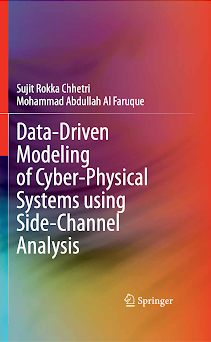Al Faruque Publishes Book on Using Data to Model Cyber-physical Systems

May 11, 2020 - Mohammad Al Faruque, associate professor of electrical engineering and computer science, has published a book titled “Data-Driven Modeling of Cyber-Physical Systems using Side-Channel Analysis” with his graduate student Sujit Rokka Chhetri.
Published by Springer Nature, the book provides a new perspective on modeling cyber-physical systems (CPS), using a data-driven approach. It covers the use of state-of-the-art machine learning and artificial intelligence algorithms for modeling various aspects of CPS, and provides practical use cases for securing the systems from attacks, and building and maintaining a digital twin of the physical system.
“This is the only book I know of addressing data-driven modeling of cyber-physical systems and how the approach can be used to model the interactions between the cyber and physical domain of the systems,” said Al Faruque, who conductsresearch on system-level design of embedded and cyber-physical-systems with a special focus on design automation, model-based design, security, and embedded machine-learning algorithms.
Present day cyber-physical systems in automotive and manufacturing generate and log large amounts of data. “These multidomain runtime data are rich in information regarding various states of the system like its health, security status, etc.” said Chhetri, who earned his Ph.D. in 2019 and now works as a staff data scientist at the Palo Alto Networks, a cybersecurity company. “This book presents various approaches to take advantage of these data and utilize it for improving the cyber-physical systems, which may otherwise not be possible during design time.”
The book also presents novel data-driven algorithms to handle using graph-learning algorithms, which may be used for smart manufacturing in the era of Industry 4.0 and cyber-physical smart city applications.
– Lori Brandt
